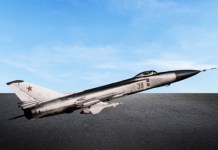Pakistan and India came together to help Sri Lanka end 30 years of Civil War, reminded Sri Lankan Prime Minister Mahinda Rajapaksa.
Why Both India And China Are Happy With Newly Elected Sri-Lankan President Gotabhaya Rajapaksa?
Recently, Mr Rajapaksa, Sri Lanka’s Prime Minister reminded the world that India and Pakistan kept their differences aside to come together and fight terrorism instilled in Sri Lanka.
“Both Pakistan and India helped us to end the 30-year-long civil war against another kind of terrorism: that of the Liberation Tigers of Tamil Eelam (LTTE). Pakistan gave us weapons and planes. India too helped, but didn’t want to publicise it at the time. Without India’s help, I don’t think we would have won that war.” The Sri Lankan Prime Minister said.
The civil war was fought between the militant Sri Lankan Tamil nationalists, primarily the Liberation Tigers of Tamil Eelam (LTTE), and the Sri Lankan military. The controversial Citizenship Act of Sri Lanka deliberately discriminated against the Indian Tamil ethnic minority by making it almost impossible for them to obtain citizenship in Sri Lanka.
Roughly over 700,000 Indian Tamils were made nationless. Over the next few decades, more than 300,000 Indian Tamils were being deported to India. It was not until 2003, 55 years after independence that all Indian Tamils living in Sri Lanka were granted citizenship. However, by this time they only constituted 5% of the island’s population.
Why Both India And China Are Happy With Newly Elected Sri-Lankan President Gotabhaya Rajapaksa?
History
Between 1815 to 1948 Great Britain ruled Sri Lanka then called Ceylon. The country had a large number of Sinhalese speaking population who likely migrated from India to the island country in the 500s BCE.
Sri Lankan people seem to have been in interaction with Tamil speakers from southern India since the second century BCE, but migrations of substantial numbers of Tamils to the island nation appears to have taken place later, between the seventh and 11th centuries CE.
In 1815, the population of the island nation was about three million, principally Buddhist Sinhalese and 300,000 mostly Hindu Tamils. The Britishers endeavoured to establish enormous cash crop plantations of coffee, tea and rubber on the island.
To achieve this the Colonial officials brought in about a million Indian Tamil speakers to work as plantation labourers. The British also established schools in the northern, Tamil-majority part of the colony, and selected Tamils to be at bureaucratic positions, infuriating the Sinhalese majority.
This was a mutual divide-and-rule approach in European colonies by the Britishers that had troubling consequences in the post-colonial era.
The Britishers granted the island nation independence in 1948. The Sinhalese, as a majority promptly began to pass laws that discriminated against the Tamils, particularly the Indian Tamils brought to the island by the Britishers.
Sinhalese was made the official language. They started driving Tamils out of the civil service. The Ceylon, now Sri Lanka, passed a Citizenship Act of 1948 successfully striped Indian Tamils from holding citizenship, making them stateless. This was not alleviated until 2003, and angst over such measures fuelled the bloody rioting that broke out multiple times in the following years.
Five Reasons Why Chopra’s Mission Kashmir Failed With His New Flick – Shikara
In July 1983, after decades of ethnic tension, the war broke out as a low-level insurgency. Ethnic riots began in Colombo and other Sri Lankan cities. Tamil Tiger militants killed 13 army soldiers, encouraging violent reprisals against Tamil civilians by their Sinhalese neighbours from across the country.
The war approximately lasted for 26 years after which the Sri Lankan government declared victory over the militant force. The following day, an official Tiger website accepted defeat by writing “This battle has reached its bitter end.”
People in Sri Lanka and around the world voiced relief that the distressing civil war had finally ended. Hideous carnages were committed on both sides, some 100,000 dead. The only question remaining is if the culprits of those atrocities will ever face trials for their misconducts.
Role of India
India’s intervention in the Sri Lankan Civil War came through the deployment of the Indian Peace Keeping Force in the island that was meant to perform a peacekeeping role. The deployment was followed by the Indo-Sri Lankan Accord of 1987 between India and Sri Lanka which was envisioned to end the Sri Lankan Civil War.
Homeland For Kashmiri Pandits: Why Kashmiri Pandits Want a Separate Homeland Far-Away From Muslims?
The original purpose of the Indian Peace Keeping Force was to not be involved in any extensive military operations. However, after a few months, the Indian Peace Keeping Force got involved with the Liberation Tigers of Tamil Eelam in a series of combats. During the two years in which it was positioned in Sri Lanka, the IPKF fought several battles against the LTTE.
Recently, Indian Prime Minister Narendra Modi asked the prime minister from neighbouring island nation, Sri Lanka to continue a post-civil war reconciliation process with minority ethnic Tamils that appears to have been delayed due to election of a new president last year.
“We had an open conversation about reconciliation in Sri Lanka. I’m confident that the government of Sri Lanka will meet the Tamil people’s expectation of equality, justice, peace and dignity in a united Sri Lanka,” Prime Minister Modi told reporters after meeting with Sri Lanka’s Prime Minister.





